The failings in learning disability services in six charts
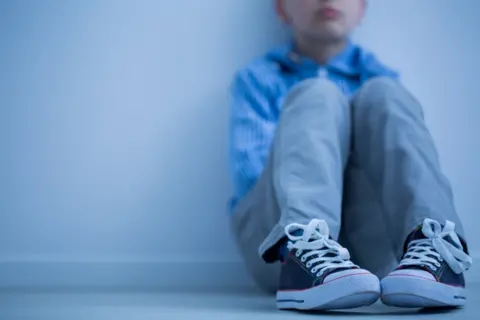 Getty Images
Getty ImagesIn 2011 a BBC Panorama investigation revealed horrific abuse at the Winterbourne View Assessment and Treatment Unit (ATU) for people with learning disabilities and autism.
Now, eight years later, Panorama has revealed evidence of abusive treatment of vulnerable patients at another ATU, Whorlton Hall in County Durham.
The hospital is one of a number of such units in England that provide care for people with learning disabilities and autism. Many are detained under the Mental Health Act.
The government has failed to achieve its target of reducing the number of inpatients in these units.
In 2015, it pledged to cut the numbers by between 35% and 50% by March 2019.
But there were still 2,245 people with learning disabilities or autism in ATUs in England in April. The number should have been between 1,300 and 1,700.
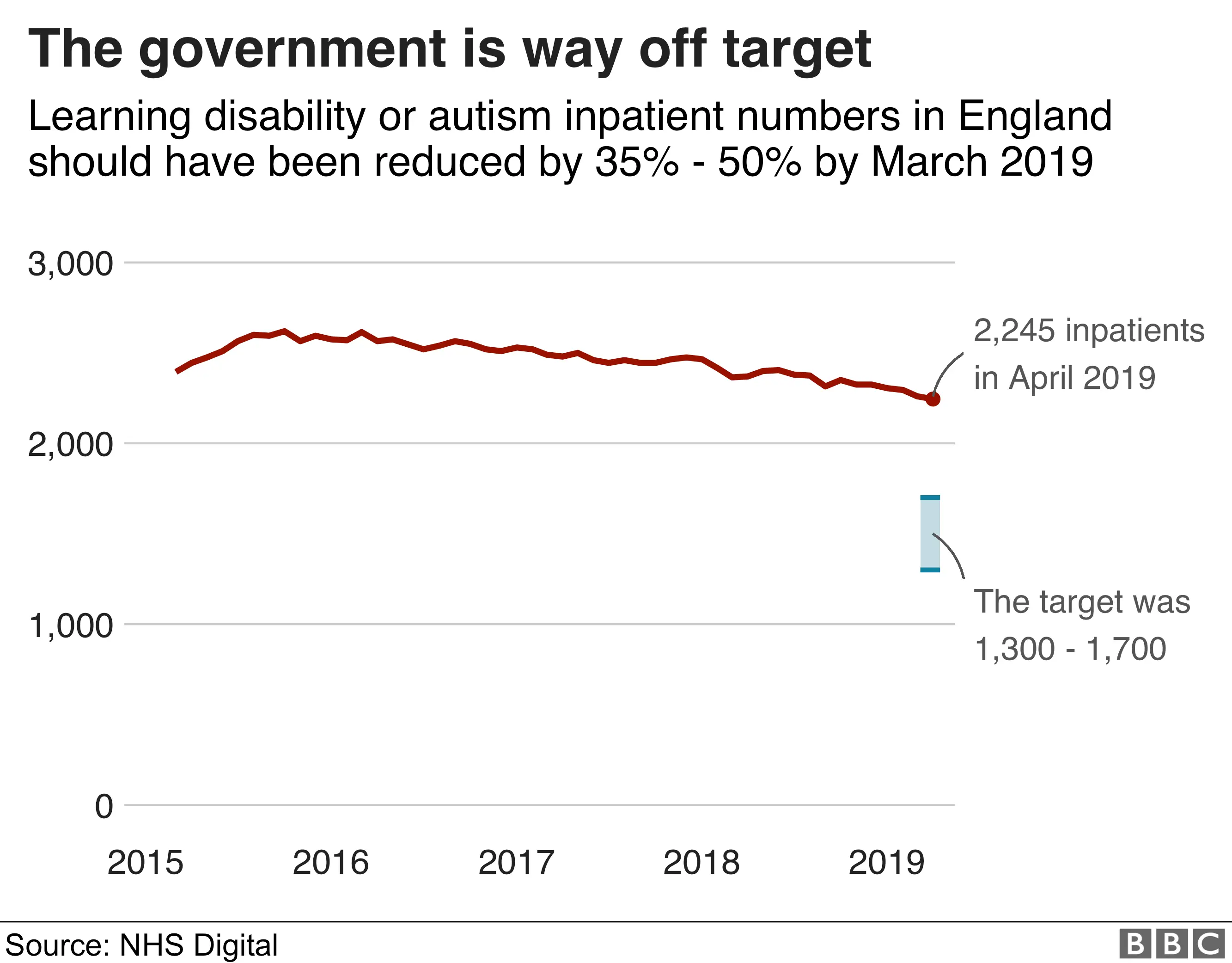
Leo, whose son Stephen was taken to an ATU at age 17, told the BBC: "I thought to myself this cannot be happening, this is like a third world country - my son is living in a third world country."
She added that she felt it was a "national secret scandal".
Leo is not alone in having a child taken to an ATU. While the total number of inpatients in ATUs has come down slightly, the number of children being admitted has risen.
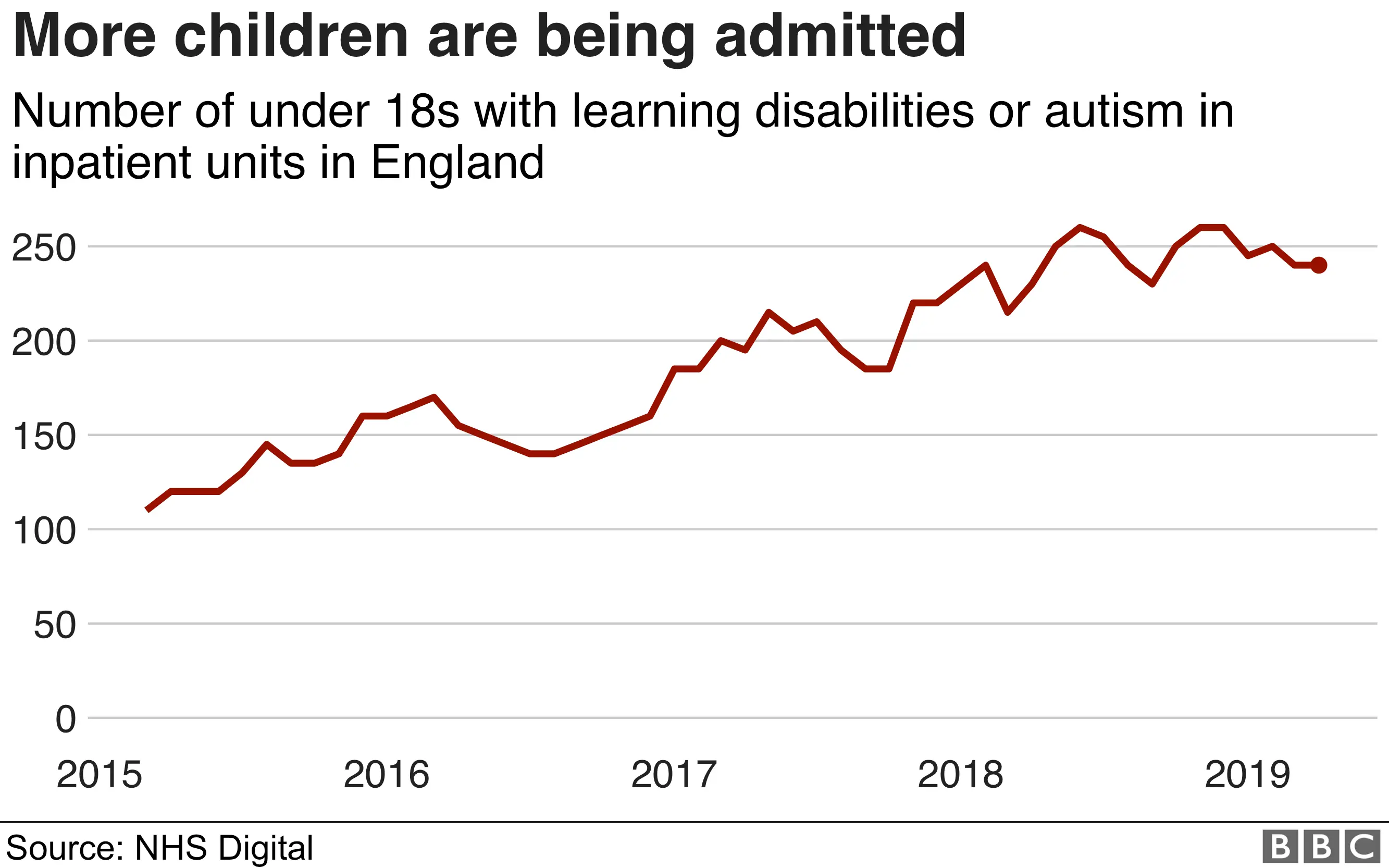
The 2015 plan for ATUs said that after many units had been closed "the limited number of beds still needed should be of higher quality and closer to people's homes".
But in April 2019, there were still 915 patients in ATUs more than 50km from home.
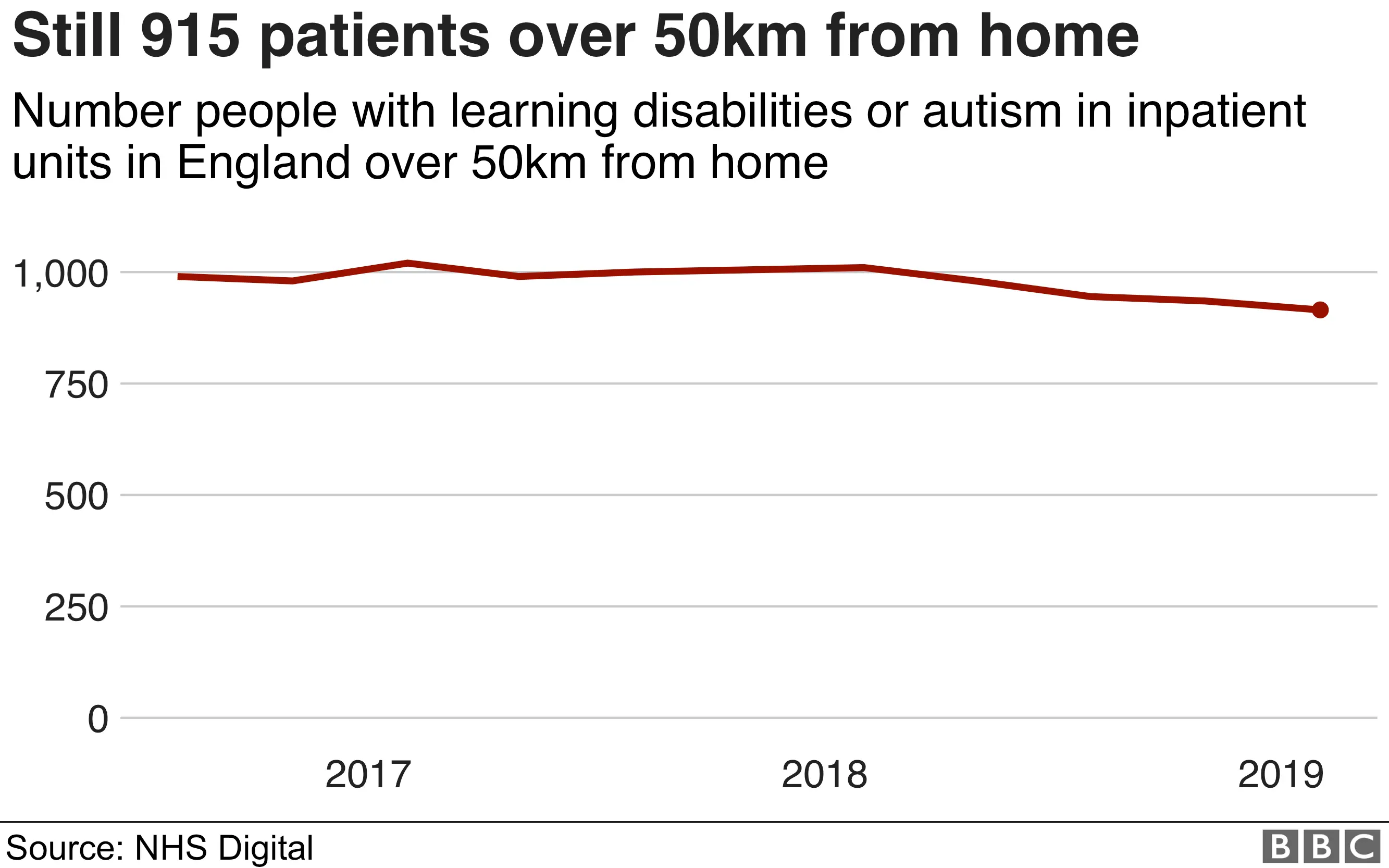
Being held far from home can be traumatic for inpatients, but tough for families too.
Leo lives in London, but Stephen's first ATU was in Northampton. "We would travel 80 miles there to visit, and then we get to the front door and we weren't allowed to visit, even though the visit was booked," she said.
"Or, they would call us - they knew we were coming - and within the next, say, about 10 minutes before we would arrive, they would call us to say 'don't come'."
Stephen was held for a total of six years in ATUs. While this might sound exceptional, the average stay is still five-and-a-half years.
In 2015, the NHS said "We will work with providers, commissioners and clinicians to reduce length of stay overall."
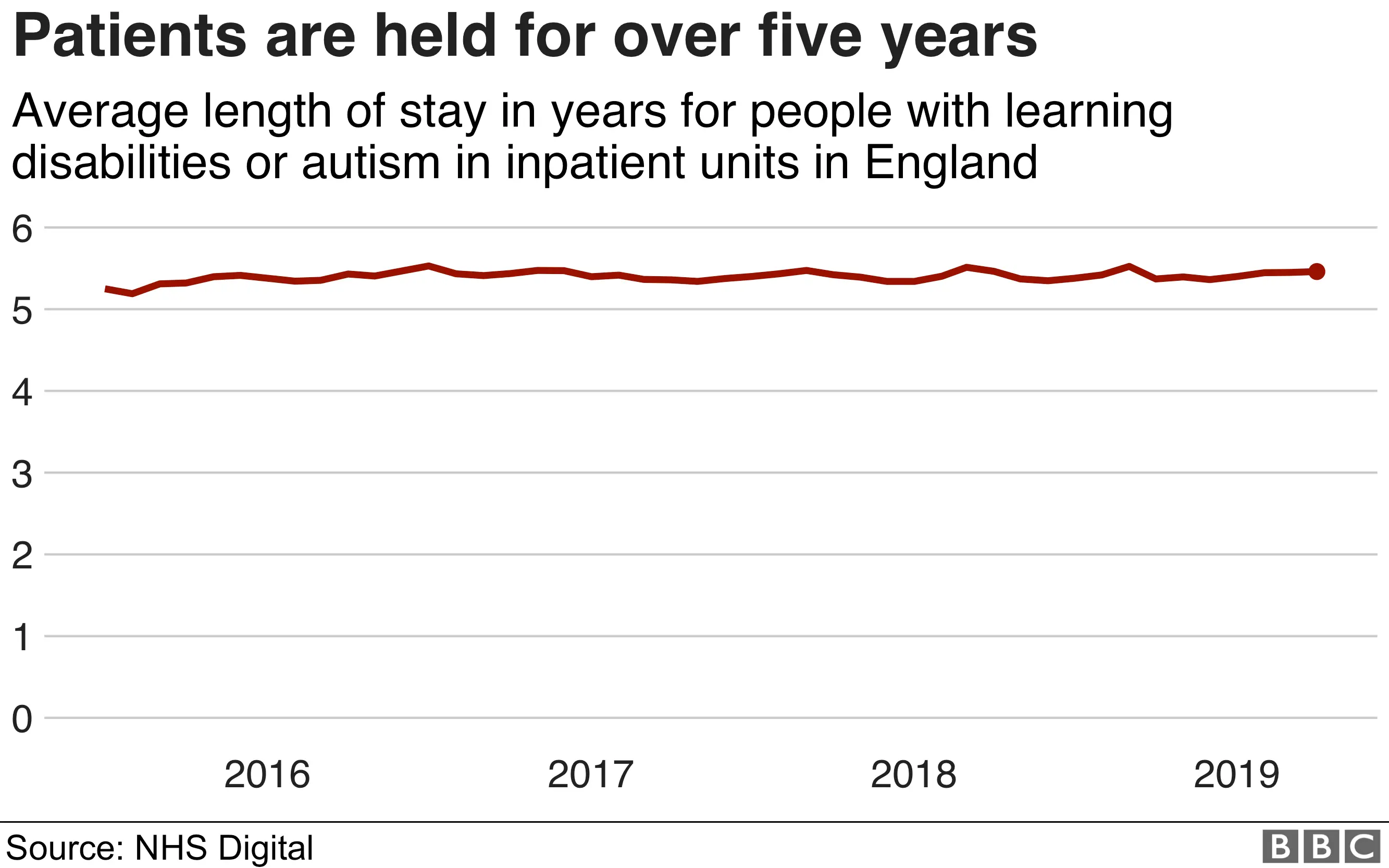
The Department of Health told BBC Panorama: "Autistic people and those with learning disabilities should receive the best possible care and be supported to live in their communities.
"We are working to ensure more people return home from hospital as soon as their treatment has finished and significant investment in community support has already led to a reduction in these mental health inpatient numbers".
BBC Panorama has also obtained data showing that the number of physical restraints on people with learning disabilities and autism in ATUs has increased.
Physical restraints should only be used to prevent a patient harming themselves or others.
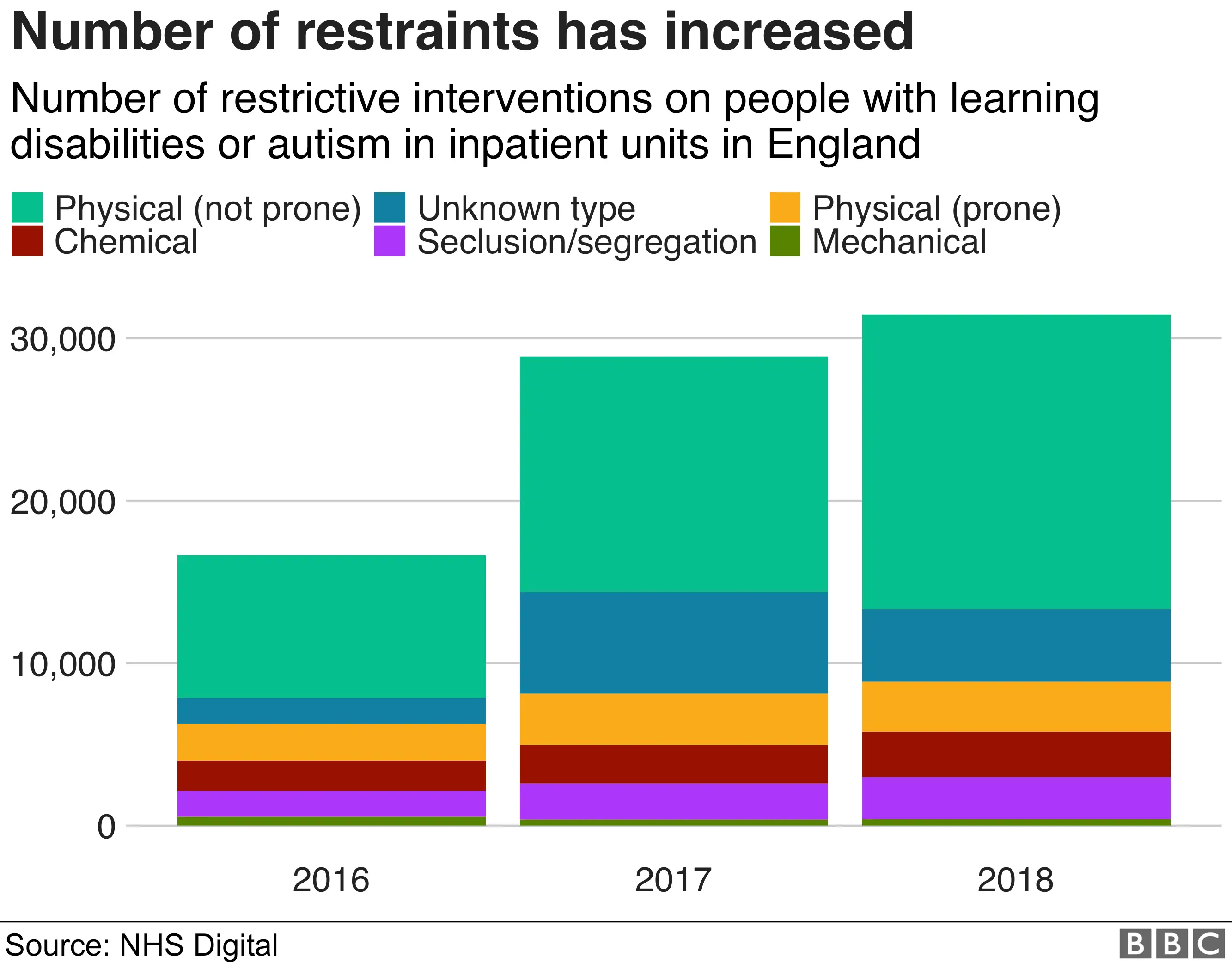
Restraints can involve sedation with strong drugs (chemical restraint), the use of belts, cuffs and restraints for behavioural control (mechanical restraint), and being forced to the floor in a chest-down position (prone restraint).

Even though there are fewer children than other age groups in ATUs, under-18s are the most likely age group to be restrained.
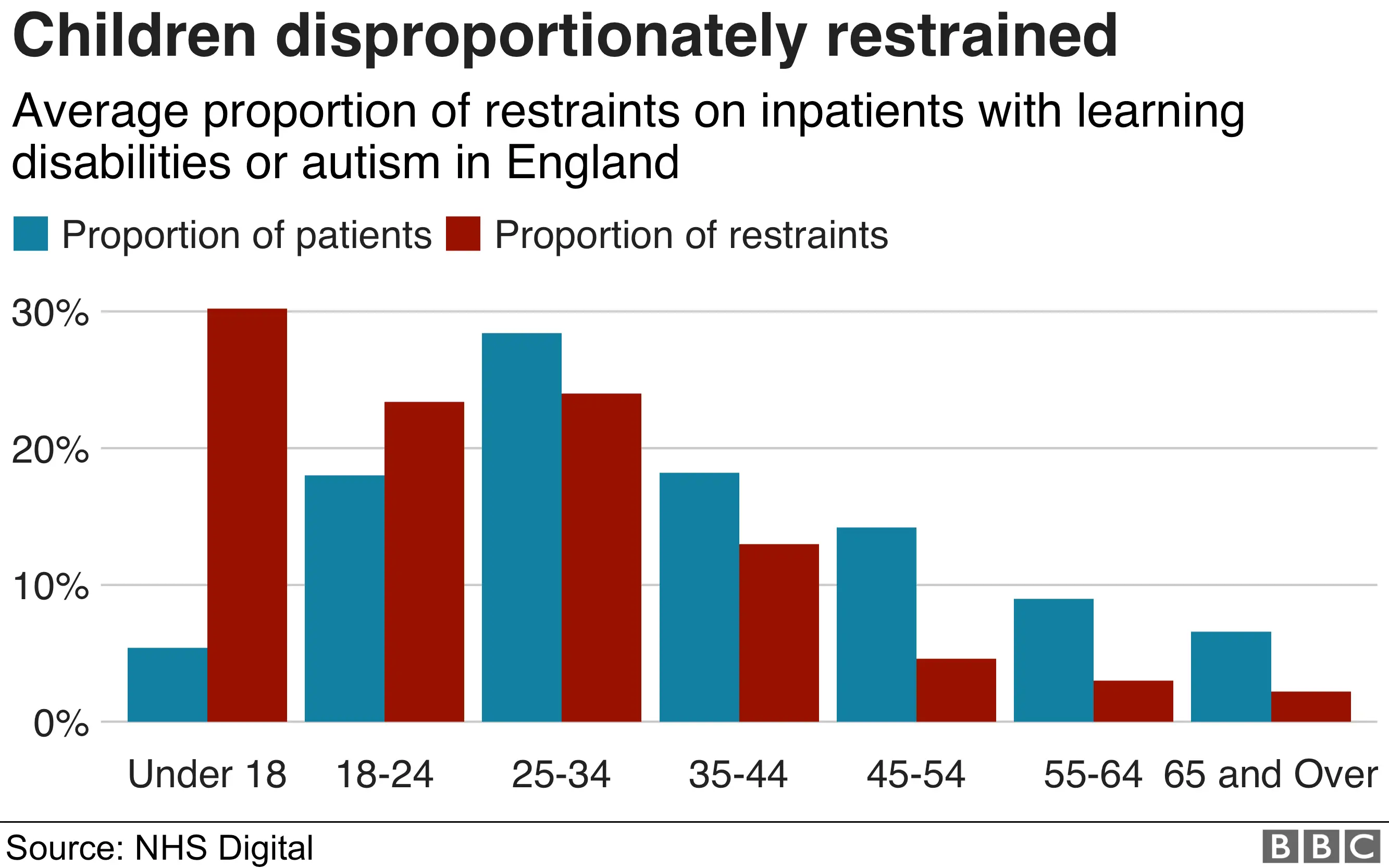
At the age of 23, Leo's son has finally been released from ATUs and moved into the local community in London, where he has lived in a private house with care for nearly seven months.
When he first came home he would scream and cry for hours, Leo said, but "for the last two and a half months… he's been doing brilliantly. There are some issues… but nothing whatsoever like it was the first four months. He's doing well and he's laughing now, he's smiling".
